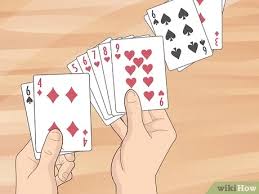Rummy 4 Players How Many Cards, is a beloved card game that blends strategy, skill, and a touch of luck, and it’s enjoyed by players around the world. One common variant of Rummy involves four players, each vying to form valid combinations of cards to win the game. Understanding the number of cards dealt to each player in a four-player game is essential for grasping the game’s dynamics and strategy. This article explores the card distribution in a four-player Rummy game and how it impacts gameplay.
Standard Card Distribution for Four Players
In a traditional Rummy game with four players using a standard 52-card deck:
- Number of Cards Dealt: Each player is dealt 10 cards. This is the standard dealing rule for most classic Rummy variants when four players are participating.
- Setting Up the Game: After dealing the 10 cards to each player, the remaining cards form the draw pile. The top card of the draw pile is placed face up to start the discard pile, setting the stage for the game.
Variations and Card Distribution
Different Rummy variants and game formats might adjust the number of cards dealt. Here are a few examples:
- Indian Rummy: In Indian Rummy, a common variant in many regions, each player is typically dealt 13 cards in a four-player game. This variant uses additional cards and often requires players to form both sets and runs to declare a win.
- Kalooki or Kaluki: In some versions of Kalooki (a variant of Rummy), players may receive 13 cards each, and the game may be played with more than one deck of cards. The rules for forming sets and runs can be similar but adjusted for the increased card count.
- Oklahoma Rummy and Other Variants: Some other Rummy variants may alter the number of cards dealt based on specific rules or regional preferences. It’s always a good idea to familiarize yourself with the particular rules of the version you are playing.
Impact of Card Distribution
- Strategic Complexity: The number of cards dealt impacts the complexity and strategy of the game. With 10 cards, players must carefully manage their hand to form valid combinations while minimizing deadwood. More cards, such as 13 in Indian Rummy, add additional complexity and opportunities for strategic play.
- Game Duration: More cards generally lead to longer games, as players have more opportunities to form combinations and reduce deadwood. Conversely, fewer cards can result in quicker games.
- Player Interaction: With four players and a specific number of cards dealt, player interaction is heightened. Players need to be observant and strategic, taking note of opponents’ discards and picks to adjust their own strategies.
Strategies for a Four-Player Game
- Forming Sets and Runs: Focus on forming valid sets (three or four cards of the same rank) and runs (three or more consecutive cards of the same suit) as early as possible. This is crucial for reducing your deadwood and increasing your chances of winning.
- Managing Discards: Be strategic with your discards. Avoid giving away cards that could help your opponents complete their sets or runs. Pay attention to their discard patterns to gain insights into their strategies.
- Observing Opponents: Carefully observe your opponents’ actions and card choices. This can provide valuable information about their hands and help you make better decisions regarding your own hand.
- Adjusting Strategy: Be flexible and adapt your strategy based on the evolving game dynamics. If forming certain sets or runs becomes challenging, consider shifting your focus to other potential combinations.
Conclusion
In a four-player Rummy game, each player is typically dealt 10 cards from a standard 52-card deck. Understanding this card distribution is crucial for effective gameplay and strategy. Whether you’re playing a traditional version or a variant with different rules, managing your hand and observing your opponents are key to success. So gather your friends, deal the cards, and enjoy the engaging and strategic world of four-player Rummy.




